
The lava that flows out of volcanoes eventually cools, hardens, and becomes solid rock. Different types of lava form different kinds of rocks.
In the first project, we see how keeping a liquid under pressure stops gas from escaping. The magma (molten rock) in volcanoes usually has a lot of gas dissolved in it. As it rises through the volcano, the gases start to expand. They help push the magma up and out if the vent is clear. If the vent is blocked, the gas pressure builds up and eventually causes the volcano to explode. The lava that comes from volcanoes with gassy magma forms rock-riddled with holes. In some explosive volcanoes, the lava contains so much gas that it forms pumice. This rock is so frothy and light that it floats on water.
When rising magma becomes trapped underground, it forces its way into gaps in the rocks and between the rock layers. This process is known as intrusion, and it is demonstrated by the second project. The rocks that form when the magma cools and solidifies are called intrusive rocks. Granite is the most common intrusive rock. Often, the heat of the intruding magma changes the surrounding rocks. They turn into metamorphic (changed form) rocks.
You will need: Small jar with tight-fitting lid, bowl, pitcher, antacid tablets.
1. Stand the jar in the bowl. Pour cold water into the jar from the pitcher until the jar is nearly full to the top. Break up two antacid tablets and drop them into the jar.
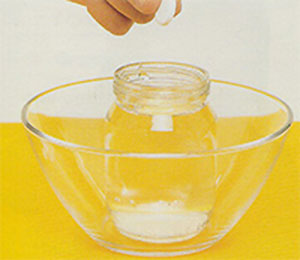
2. Quickly screw the lid on the jar. Little bubbles will start to rise from the tablets, but will soon stop. Pressure has built up in the jar, and this prevents any more gas from escaping.
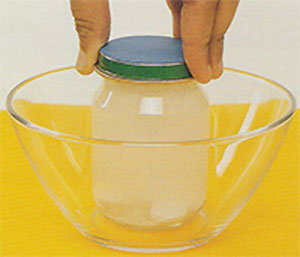
3. Now quickly unscrew the lid from the jar and see what happens. The whole jar starts fizzing. Removing the lid releases the pressure, and the gas in the liquid bubbles out.
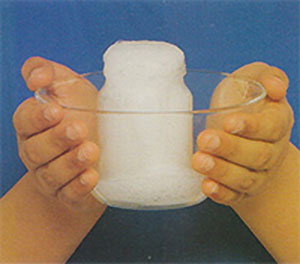
You will need: Plastic jar, bradawl, pieces of broken tiles, nonhardening modeling material, tube of colored toothpaste.
1. Make a hole in the bottom of the plastic jar with a bradawl, bug enough to fit the neck of the toothpaste tube in. Keep your steadying hand away from the sharp end of the bradawl.

2. Place the pieces of broken tiles on the bottom of the jar. Keep them as flat as possible. They are supposed to represent the layers of rocks that are found in the Earth’s crust.
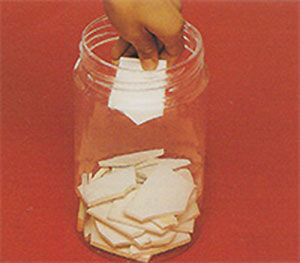
3. Flatten out the modeling material into a disk as wide as the inside of the jar. Put the disk of modeling material inside the jar. Push it down firmly on top of the tiles.
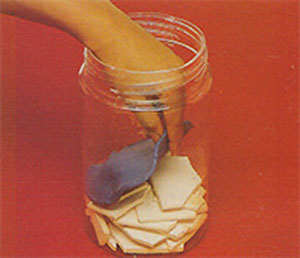
4. Unscrew the top of the toothpaste tube, and force the neck into the hole you have made in the bottom of the bottle. You may have to widen it a little to get the neck in.
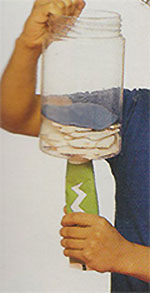
5. Squeeze the toothpaste tube. You will see the toothpaste pushing, or intruding, into the tile layers and making the disk on top rise. Molten magma often behaves in the same way. It intrudes into rock layers and makes the Earth’s surface bulge.
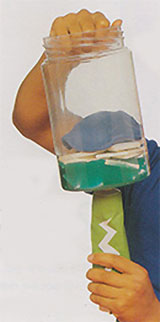

Try out the other sections